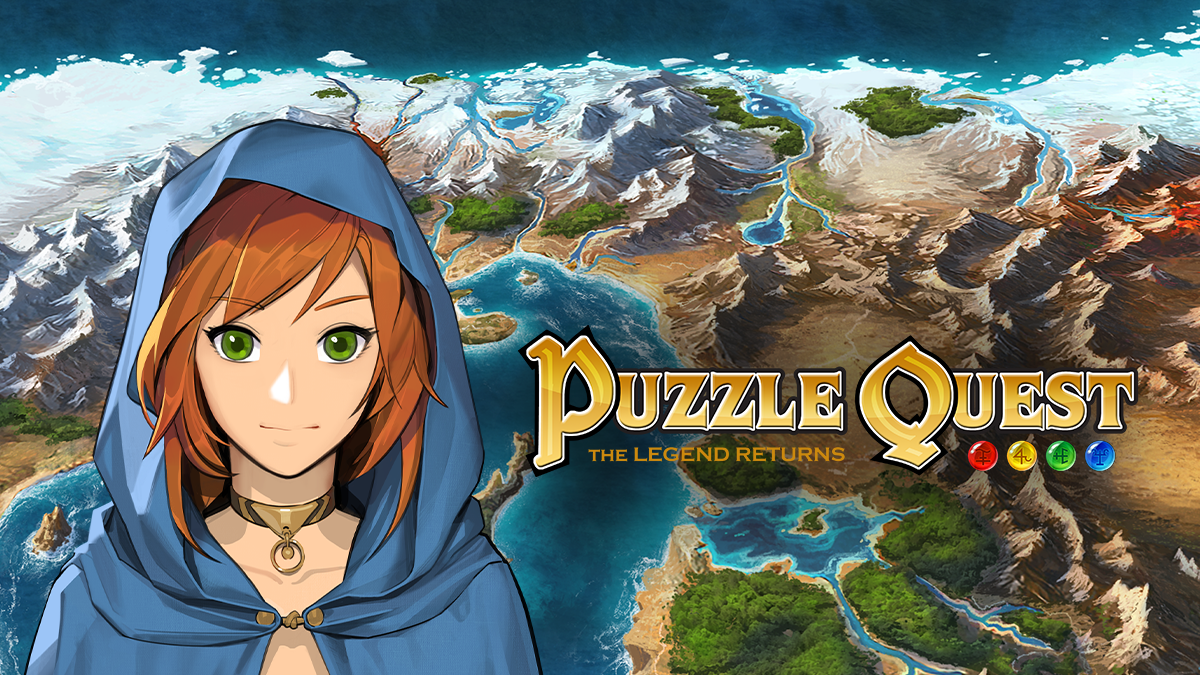Trading in your d20s for skulls and gems.
Does “legend” seem like too weighty of a word when we’re talking about a match 3 game? Well, it’s not. Puzzle Quest was a highly addictive, wonderfully designed game back when it was originally released for the Nintendo 3DS and PSP back in 2007, and it’s equally addictive in this updated and expanded release for the Nintendo Switch.
Puzzle Quest: The Legend Returns is a match 3 / RPG mashup that focuses mostly on the matching. That’s not to say the RPG elements aren’t important, however, as they do affect the way you’ll approach the game. Your selection of character class, for example, determines how you’ll attack enemies and defend yourself during the match 3 “battles.” This release includes five new classes from which to choose, and the game is kind enough to point out the difficulty you’ll face with each selection.
Damage is mostly done by matching three skulls horizontally or vertically on the gem grid, but that’s not your only means of attack. Each class has its own set of mana abilities that you can unleash by filling up the appropriately colored gem category, and you fill those up by matching gems of that color. As such, it’s not always best to match skulls and damage your opponent. You may instead want to go for a color match to power up your mana abilities or to prevent your opponent from doing the same. You can also choose to match gold coins to help you purchase items that improve your strength or match purple stars that help you level up.
In other words, there’s a lot to consider with each move. Matching four or five gems will instantly give you a second turn, and it’s possible that a match you want may set up your opponent for a devastating attack on you. Because of this, I recommend turning off the match finder that Puzzle Quest activates by default; quite often it will prompt you into a terrible move.
Sadly, strategy isn’t nearly as important in Puzzle Quest as luck is. You never know what will drop into the field of play as you make gems disappear, and the most innocent of moves may set off a chain reaction that can quickly turn the tides of battle. That can be infuriating at times (I’ve accused this game of cheating more than all my other Switch games combined), but it’s inherent in the genre. Luck can cause you to be overwhelmed in one game, then allow you to steal a victory in the next.
Puzzle Quest also helps to mitigate this by allowing you to select quests based on difficulty. You can have four side quests running at any time, and although the rewards for these are minimal they will help you level up so you’re better prepared to take on the main story quests. The game also forces you into battles as you traverse the map, so you’ll have no choice but to play many inconsequential challenges.
Aside from using different strategies for the various opponents, the match 3 battles themselves never change much throughout the game’s story. You’d think this would be a negative, but Puzzle Quest remains addictive throughout the crazy amount of content presented in this package. Even if you lose interest in the story (a kingdom under attack, precarious alliances, a lone warrior who must rise up, etc.), the gameplay carries itself well.
I also found it fun to try out the capabilities of the new weapons I acquired (such as an early one that came with the chance to add a skull to the playing field with with each strike) and helpers (like the friendly fellow who instantly does 10 damage to the undead at the beginning of the round). Equipping yourself appropriately isn’t required to work your way through the game, but it can make things easier.
This remaster for the Nintendo Switch includes the original Puzzle Quest: Challenge of the Warlords and the Revenge of the Plague Lord expansion, as well as new quests added specifically for this release (nearly 250 in total). It also offers new HD graphics that look pretty good on both the TV and in handheld mode, although some of the text can be hard to read on the Switch screen. The game plays well both ways, too; you can tap and swipe the gem you want to move in portable mode, and just select the gem you want and move the control stick in the direction you want it to go while playing docked.
There’s also a multiplayer option, but it’s online only for some odd reason. It would be fun to play this game in couch co-op, so hopefully the developers at Infinite Interactive work that option in soon.
Review: Puzzle Quest: The Legend Returns (Nintendo Switch)
Very Good






